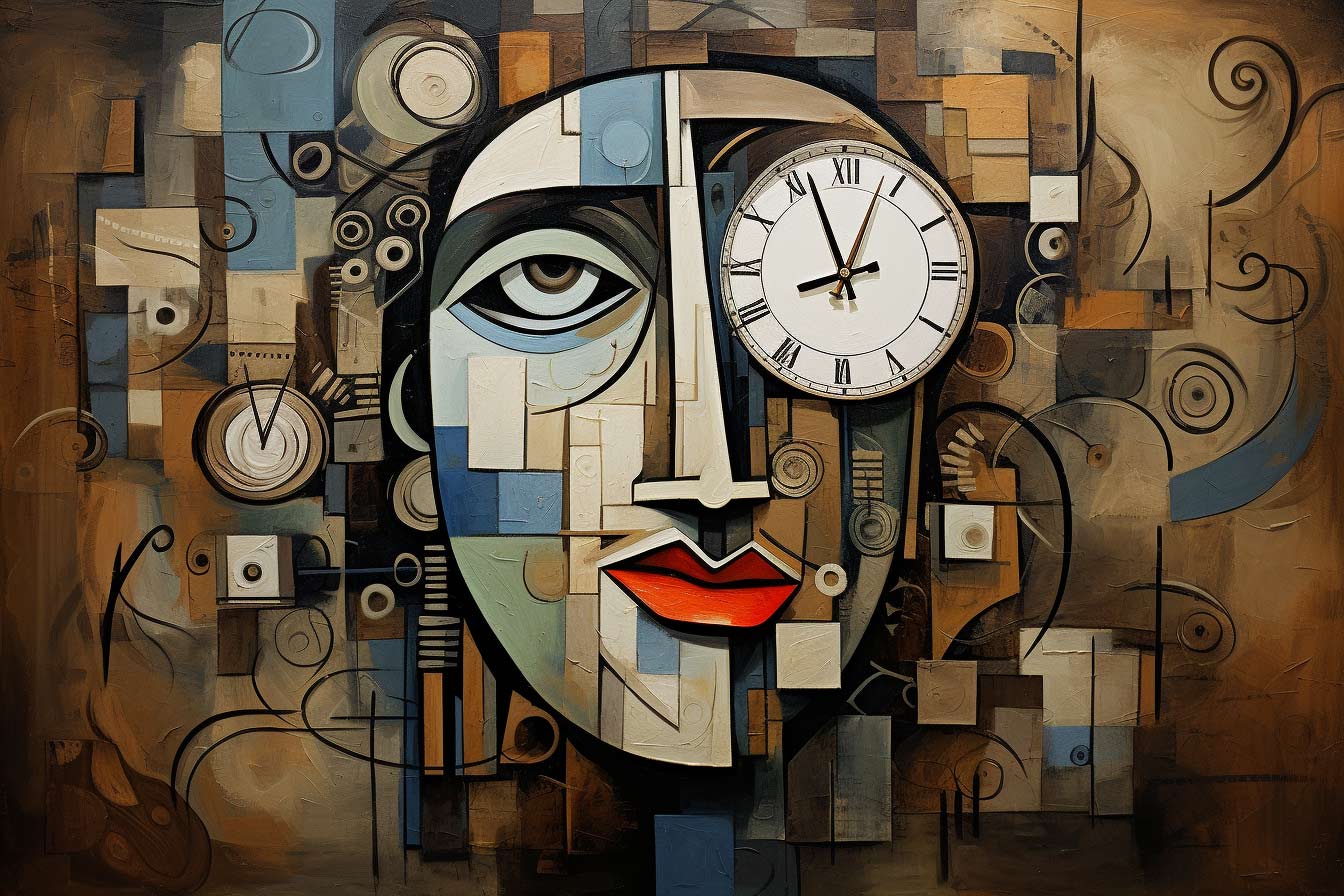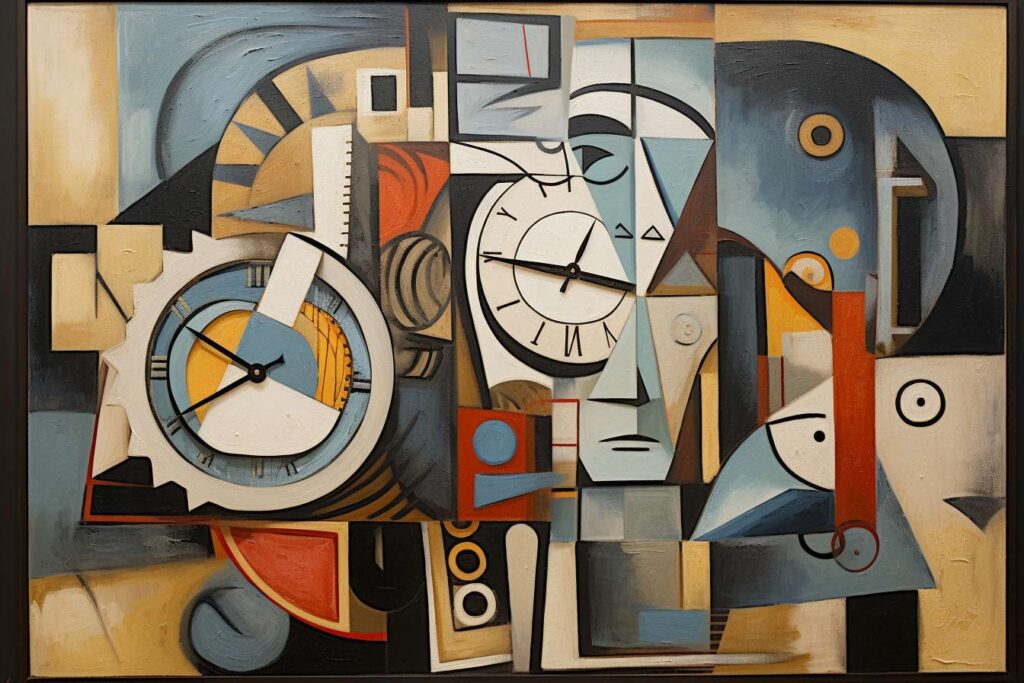Time Analyzed: A Dual Perspective of Antique Clock Fragments
The inexorable march of time, with its unyielding cadence, has been a muse for many an artist. Yet, the instruments that measure this march, the intricate clocks with their ballet of gears and hands, hold a poetry all their own. In the embrace of Cubism, the antique clock, an emblem of bygone eras and intricate craftsmanship, undergoes a transformation. It is not just portrayed but analyzed, its dual nature – the inner mechanics and the external elegance – unveiled in a dance of geometric fragments.
Dissecting the Ticks and Tocks: The Heart of Time
Within the confines of a clock’s ornate exterior lies a world of marvels, a symphony of cogs, wheels, and pendulums. The Cubist’s gaze delves deep, fragmenting this mechanical ballet into its essential parts. Each gear, each spring, is dissected and depicted, not in isolation, but as part of a grander tableau, revealing the intricate choreography that dictates the passage of hours and minutes.
The External Majesty: An Artistry Beyond Time
As the innards of the clock are laid bare, so too is its exterior splendor. The ornate carvings, the gilded edges, and the timeless numerals are all rendered in fragmented form. Yet, there’s a harmony in this decomposition. The external beauty of the clock, with its history and artistry, is juxtaposed against its internal complexity, creating a mosaic that speaks of both form and function.
A Confluence of Views: Past, Present, and Craftsmanship
In presenting the antique clock in such a multifaceted manner, Cubism offers more than just a visual treat. It invites a meditation on time itself – the past that the antique clock hails from, the present in which it is viewed, and the timeless craftsmanship that birthed it. This duality of perspective, internal and external, becomes a metaphor for the very nature of time – ceaselessly internal in its march, yet externally manifested in moments and memories.
To gaze upon the Cubist portrayal of an antique clock is to journey through epochs and engineering. It is a reminder that time, in its essence, is both tangible and intangible, a construct and a reality, a measure and an experience. In breaking down the clock into its fragments, Cubism doesn’t diminish its majesty but amplifies it, offering a simultaneous view of its soul and its skin, its ticks and its tales.

